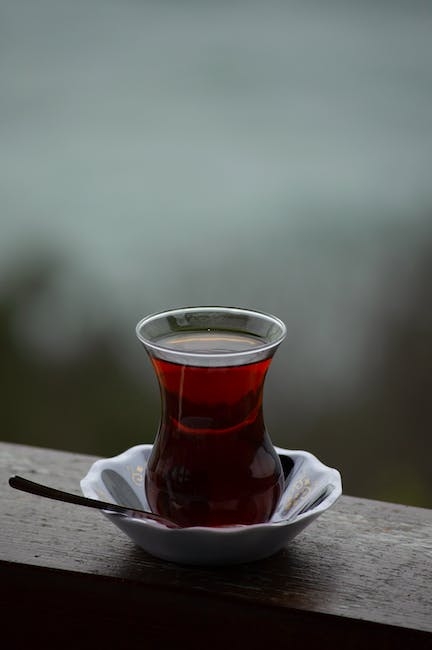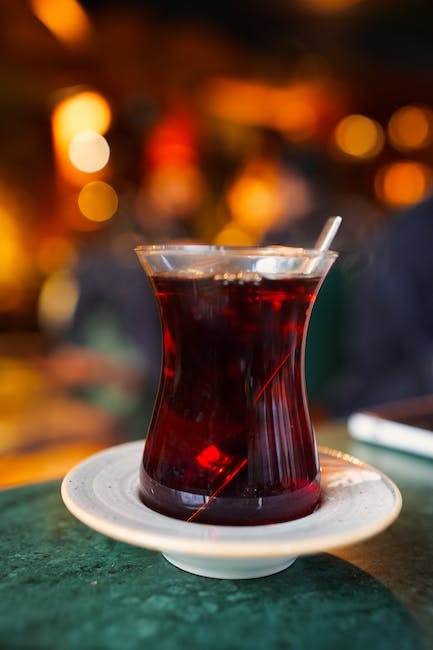Exploring the Unique Taste of Ceylon Tea
As a tea lover, have you ever wondered what makes Ceylon tea so special? Ceylon tea is known for its unique taste and aroma, which is a result of the specific environmental conditions in Sri Lanka where it is grown. Let’s dive deeper into the factors that contribute to the distinct flavor profile of Ceylon tea.
Climate and Altitude
The climate in Sri Lanka is characterized by warm temperatures and high humidity, which promote the growth of tea bushes and contribute to the flavor of the tea leaves. The altitude is also a significant factor in the taste of Ceylon tea. Sri Lanka’s tea estates are located in the mountainous regions of the country, where the altitude ranges from 600 to 2,500 meters above sea level. The higher the altitude, the slower the growth of the tea leaves, which results in a more delicate and nuanced flavor profile.
Soil Quality
The soil in Sri Lanka’s tea-growing regions is rich in minerals, which also contributes to the flavor of the tea. The tea bushes absorb these minerals from the soil, which affects the taste and aroma of the tea leaves.
Orthodox Method of Production
Ceylon tea is produced using the orthodox method, which involves handpicking the tea leaves and carefully processing them to preserve their unique flavor profile. This method is labor-intensive but results in a high-quality tea that is prized by tea connoisseurs around the world.
Regional Variations in Flavor
The different regions of Sri Lanka produce different types of Ceylon tea. Each region has its own distinct flavor characteristics. For example, tea from the Nuwara Eliya region is known for its light, floral taste, while tea from the Uva region is more full-bodied and robust.
Conclusion
Ceylon tea is a true delight for tea lovers, with its unique taste and aroma that is a result of the specific environmental conditions in Sri Lanka where it is grown. From its climate, altitude, and soil quality to the orthodox method of production and regional variations in flavor, every aspect of Ceylon tea contributes to its distinct flavor profile. So, the next time you savor a cup of Ceylon tea, remember the journey it took to reach your cup and the factors that make it so special.
Discovering the Richness of Ceylon Tea: A Guide to Its Different Varieties
When it comes to tea, Ceylon tea is one of the most popular choices around the world. It is known for its high quality and unique taste, which is influenced by various factors such as processing methods, oxidation levels, and growing conditions. Whether you are a tea aficionado or just starting to explore this beverage, it’s worth learning about the different varieties of Ceylon tea and what makes each of them special.
Black Tea: Bold and Robust
Black tea is the most common type of Ceylon tea, and it is fully oxidized to create a bold and robust flavor. It is often used in blends for iced tea and chai, and it is a great choice for those who prefer a stronger taste. Black tea is usually grown in lower altitudes where the climate is warmer, resulting in a bolder flavor profile. However, the quality of black tea can vary depending on the processing method and the specific tea garden.
Green Tea: Light and Delicate
Green tea is another popular variety of Ceylon tea, and it is unoxidized, resulting in a lighter and more delicate flavor. Its popularity is partly due to its health benefits, as it is high in antioxidants and known to boost metabolism and reduce the risk of certain diseases. Green tea is often grown in higher altitudes, where the cooler climate allows the tea leaves to retain more of their natural flavor and aroma. It is a great choice for those who prefer a milder taste or are looking for a healthier option.
White Tea: Sweet and Fragrant
White tea is the least processed type of Ceylon tea, and it is made from the youngest buds and leaves of the tea plant. It has a light, sweet flavor and is known for its delicate aroma. White tea is usually grown in high-altitude tea gardens with cool and dry weather, which enhances its natural sweetness. It is a great choice for those who want a tea that is subtle and fragrant.
Oolong Tea: Complex and Floral

Oolong tea is a partially oxidized variety of Ceylon tea, and it has a complex and floral flavor that is often described as a mix of black and green tea. Its oxidation level can vary depending on the specific tea garden and processing method, resulting in a wide range of flavor profiles. Oolong tea is often grown in mid-altitude tea gardens with a mix of warm and cool weather. It is a great choice for those who want a tea with a unique and nuanced taste.
Flavored Tea: Infused with Fruits and Spices
Flavored teas are Ceylon teas that are infused with fruits, herbs, or spices to add flavor and aroma. They come in a wide variety of blends, from classic Earl Grey to exotic tropical fruit teas. Flavored teas are a great choice for those who want to explore different tastes and experiment with their tea drinking experience. The quality of flavored teas can vary depending on the quality of the base tea and the freshness of the added ingredients.
Factors that Affect Ceylon Tea’s Characteristics
The unique characteristics of each type of Ceylon tea are influenced by various factors such as the altitude of the tea gardens, the climate, and the soil quality. For example, high-altitude teas are often more delicate and have a lighter flavor, while teas grown in warmer climates may have a bolder and more robust flavor. The processing method also plays a crucial role in determining the taste and aroma of the tea. Some teas undergo a longer oxidation process, resulting in a stronger taste, while others are minimally processed to retain their natural sweetness and fragrance.
Conclusion
Ceylon tea is a rich and diverse beverage that offers a wide range of tastes and aromas. Whether you prefer a bold and robust black tea or a delicate and fragrant white tea, there is a Ceylon tea variety that suits your taste. By understanding the unique characteristics of each type of Ceylon tea, you can explore its rich history and culture and discover new flavors and blends that suit your preferences.
Brewing the Perfect Cup of Ceylon Tea: Tips and Tricks
Ceylon tea is known for its robust and unique flavor that is unmatched by any other tea in the world. The secret to getting the best taste from this tea lies in the brewing process. Here are some tips and tricks to help you brew the perfect cup of Ceylon tea:
1. Water Temperature
The ideal water temperature for brewing Ceylon tea is between 195-205F (90-96C). This temperature ensures that the tea leaves are not scorched while also extracting the full flavor of the tea. Using water that is too hot can result in a burnt taste, while water that is too cold won’t extract the full flavor of the tea.
2. Steeping Time
The steeping time for Ceylon tea varies depending on the type of tea, but generally, it should be steeped for 3-5 minutes. Over-steeping can result in a bitter taste, while under-steeping can result in a weak flavor. It’s important to experiment with the steeping time to find the perfect balance for your taste buds.
3. Tea-to-Water Ratio
The tea-to-water ratio for Ceylon tea is usually 1 teaspoon of tea per 8 ounces of water. However, this can vary depending on personal preference and the strength of the tea. Some people prefer a stronger cup of tea and may use more tea leaves, while others prefer a milder taste and may use less. It’s important to experiment with the tea-to-water ratio to find the perfect balance for your taste buds.
4. Water Quality
To get the best flavor from Ceylon tea, it’s important to use fresh, high-quality water. Tap water can contain impurities that can affect the taste of the tea. Using filtered or bottled water can result in a better-tasting cup of tea.
5. Tea Strainer or Infuser
To prevent any loose tea leaves from getting into the cup, it’s recommended to use a tea strainer or infuser. This can also make for a more visually appealing cup of tea.
6. Personal Preference
Lastly, adding milk, sugar, or honey to Ceylon tea is a matter of personal preference. While some people enjoy the natural flavor of the tea, others prefer to add sweeteners or milk to enhance the taste. It’s important to experiment and find what works best for you.
In conclusion, brewing the perfect cup of Ceylon tea requires attention to detail and experimentation. By following these tips and tricks, you’ll be able to brew a cup of tea that is full of flavor and aroma. So, go ahead and try out these tips, and let us know your thoughts in the comments!


Leave a Reply